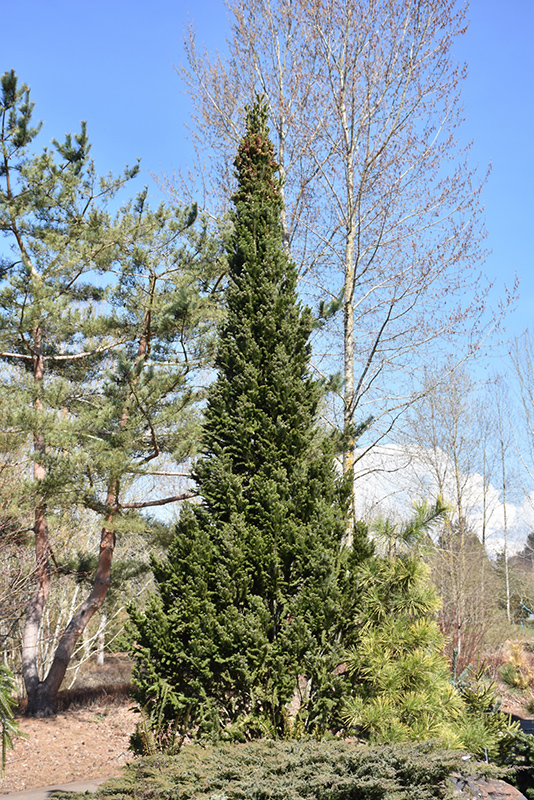>> Home
Pyramidalis Silver Fir
Abies alba 'Pyramidalis'
Height: 30 feet
Spread: 10 feet
Sunlight:
![]()
![]()
Hardiness Zone: 4a
Description:
This variety is narrowly pyramidal when young; dense, dark-green needles with silver undersides; compact, columnar form is perfect for smaller areas, makes a wonderful landscape accent
Ornamental Features
Pyramidalis Silver Fir is primarily valued in the landscape for its rigidly columnar form. It has attractive forest green foliage with silver undersides. The needles are highly ornamental and remain forest green throughout the winter. The smooth gray bark adds an interesting dimension to the landscape.
Landscape Attributes
Pyramidalis Silver Fir is a dense evergreen tree with a strong central leader and a narrowly upright and columnar growth habit. Its relatively fine texture sets it apart from other landscape plants with less refined foliage.
This is a relatively low maintenance tree, and usually looks its best without pruning, although it will tolerate pruning. It has no significant negative characteristics.
Pyramidalis Silver Fir is recommended for the following landscape applications;
- Accent
- Hedges/Screening
- General Garden Use
Planting & Growing
Pyramidalis Silver Fir will grow to be about 30 feet tall at maturity, with a spread of 10 feet. It has a low canopy, and is suitable for planting under power lines. It grows at a slow rate, and under ideal conditions can be expected to live for 50 years or more.
This tree does best in full sun to partial shade. It does best in average to evenly moist conditions, but will not tolerate standing water. It is not particular as to soil type or pH. It is somewhat tolerant of urban pollution, and will benefit from being planted in a relatively sheltered location. Consider applying a thick mulch around the root zone in both summer and winter to conserve soil moisture and protect it in exposed locations or colder microclimates. This is a selected variety of a species not originally from North America.
